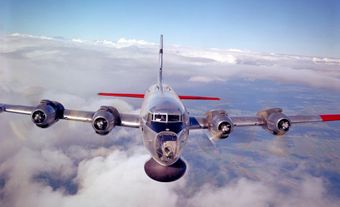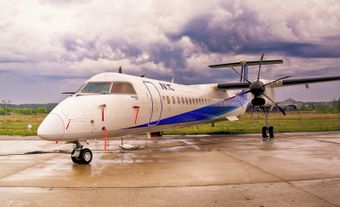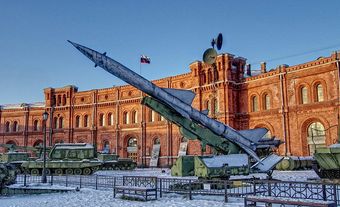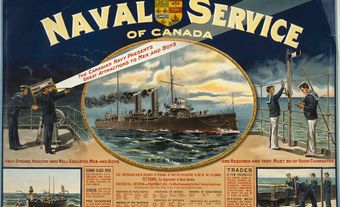The Tracker was a twin-engine fixed-wing aircraft acquired by the Royal Canadian Navy (RCN) to be flown off aircraft carriers for antisubmarine warfare (ASW) as a replacement for the Grumman Avenger. Originally developed for the United States Navy (USN), a Canadian version was manufactured under licence by de Havilland Canada as the CS2F. After unification the plane was redesignated as the CP-121; the Trackers became shore-based aircraft after the aircraft carrier HMCS Bonaventure was decommissioned. The Trackers became fully operational in 1959 and were withdrawn from service in 1989.
Grumman (de Havilland) Tracker
The S-2 Tracker was developed in the early 1950s by the United States Navy (USN) to provide all-weather ASW protection to fleets at sea beyond the range of shore-based long range patrol aircraft (LRPA). The Grumman Aircraft Engineering Corporation manufactured more than 1,200 aircraft for the USN and for export to 13 allied navies around the world. Another 99 were produced under licence by de Havilland Canada in Downsview, Ontario, as the CS2F version for the RCN. It was the only Canadian-built aircraft ever ordered for the RCN. The Tracker’s wings folded to save space on aircraft carriers, while the Canadian version was 18 inches shorter to fit in the smaller hangars on Canadian aircraft carriers.
Design
The RCN ordered the Tracker at the same time as the Royal Canadian Air Force (RCAF) was developing the Canadair CL-28 Argus LRPA, and the aircraft shared much of the same ASW equipment and weapons. The primary sensors included a surface-search radar in the nose, a powerful underwing searchlight, a retractable magnetic anomaly detector (MAD) boom out the rear of the fuselage and a “Jezebel” Low Frequency Analyzer and Recorder (LOFAR) for onboard processing of submarine “noise” signals relayed from sonobuoys.
Although the Tracker had a smaller payload (2,200 kg) than the Argus (3,600 kg), it had an internal bomb bay and underwing hardpoints for carrying a variety of depth bombs, torpedoes and sonobuoys. After the Tracker was transferred ashore in 1970, it was fitted with the CRV-7 air-to-ground rockets developed by Bristol Canada. Its nine-hour endurance, while half that of the Argus, was exceptional for shipborne aircraft. The Tracker had a crew of four: pilot, co-pilot and two ASW sensor operators.
Service
The first Canadian-built aircraft flew on 31 May 1956; although carrier qualifications began a year later following commissioning of HMCS Bonaventure in the summer of 1957, the CS2F Trackers were not fully operational until January 1959. They remained the core of the carrier air wing until the Bonaventure was paid off in 1970 as a cost-saving measure after unification of the Canadian Armed Forces. With the removal of all ASW sensors and the installation of new radar and communications equipment, the Trackers were then redesignated the CP-121 and transferred ashore to fly sovereignty patrols off the east and west coasts. They were withdrawn from service in 1989.
As Bonaventure’s air wing typically included eight Trackers, far more of the aircraft were acquired than needed for ASW. Many ended their days as training platforms for ground crew, and several examples remain as static outdoor displays at present-day air bases. Good quality specimens are maintained by the Canada Aviation and Space Museum in Ottawa and the Shearwater Aviation Museum in Dartmouth, Nova Scotia. The Canadian Warplane Heritage Museum in Hamilton, Ontario, has kept one in flying condition.

 Share on Facebook
Share on Facebook Share on X
Share on X Share by Email
Share by Email Share on Google Classroom
Share on Google Classroom




